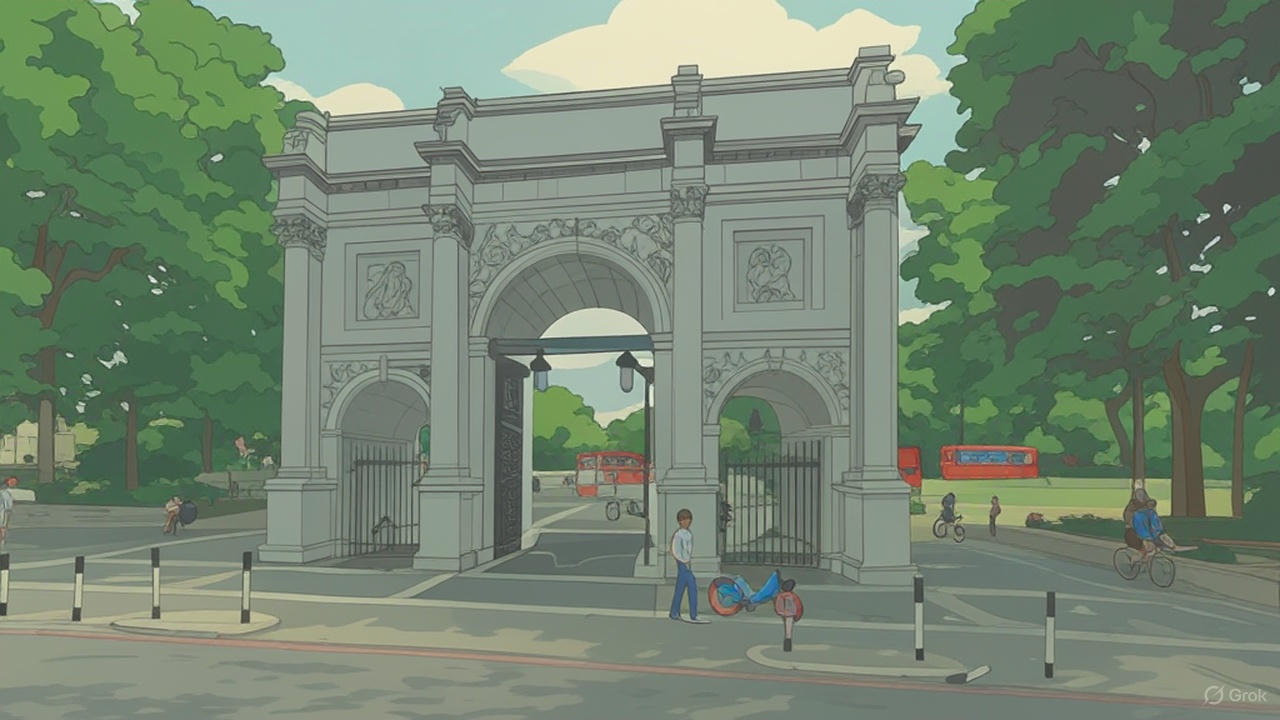 Statues, Monuments and Memorials in London
Statues, Monuments and Memorials in LondonLondon is home to many statues, monuments, and memorials that commemorate historical events, individuals, and achievements. From the grandeur of the Victoria Memorial to the somber presence of the Cenotaph, these landmarks offer a fascinating glimpse into London's rich history and culture. Below is a selection of notable statues, monuments, and memorials in the city, listed in alphabetical order.
- Albert Memorial (GPS: 51.50235, -0.1777)

Located in Kensington Gardens, the Albert Memorial was erected in 1872 to honor Prince Albert, the consort of Queen Victoria, after his death in 1861. The monument is an elaborate Gothic structure, featuring a central statue of Prince Albert and surrounded by various allegorical figures representing different aspects of his life and achievements. - Admiralty Arch (GPS: 51.50678, -0.12865)

Standing at the end of The Mall, Admiralty Arch was designed by Sir Aston Webb in 1912 as a memorial to Queen Victoria. Its grand arches once marked the entrance to Buckingham Palace and now serve as an iconic landmark, framing the view down The Mall towards Trafalgar Square. - Cenotaph (GPS: 51.50268, -0.12608)

The Cenotaph, located in Whitehall, is a solemn war memorial dedicated to the British and Commonwealth military personnel who died in the two World Wars and later conflicts. Designed by Sir Edwin Lutyens, it was unveiled in 1920 and is the site of the annual Remembrance Day service. - Cleopatra's Needle (GPS: 51.5085, -0.1203)

A 3,500-year-old Egyptian obelisk located on the Victoria Embankment, Cleopatra's Needle was gifted to Britain by Egypt in 1819. It commemorates the reign of Thutmose III and Ramses II and has become an iconic part of London's riverside landscape. - Crimean War Memorial

Situated near the Royal Exchange, this memorial commemorates the British soldiers who fought in the Crimean War (1853–1856). The statue depicts a soldier from the war and serves as a tribute to the sacrifices made during this turbulent period. - Diana Princess of Wales Memorial Fountain (GPS: 51.50495, -0.1717)

Located in Hyde Park, the Diana, Princess of Wales Memorial Fountain was opened in 2004 to commemorate the life of Princess Diana. The modern, oval-shaped design features a stream of water flowing through a series of curves and cascades, symbolizing the life and spirit of the princess. The fountain’s simplicity and elegance reflect Diana's personality, and it has become a popular site for visitors to relax and reflect on her legacy.. - Marble Arch (GPS: 51.51322, -0.15889)

Originally designed as a grand entrance to Buckingham Palace, Marble Arch now stands at the junction of Oxford Street and Park Lane. It is an imposing neoclassical structure that commemorates victories during the reign of King George III, particularly the Battle of Waterloo. - Monument to the Gurkha Soldier (GPS: 51.50503, -0.12501)

Unveiled in 1997, this memorial in Victoria Embankment Gardens honors the Gurkha soldiers, who have served in the British Army for over 200 years. The statue depicts a Gurkha soldier in traditional dress, symbolizing their bravery and service. - Monument to the Great Fire of London (GPS: 51.51014, -0.08594)

Located near London Bridge, this 202-foot column was built to commemorate the Great Fire of London in 1666. The monument offers a panoramic view of the city from its top and features a plaque detailing the fire's destruction and subsequent rebuilding of London. - Nelson's Column (GPS: 51.50776, -0.12792)

Located in Trafalgar Square, Nelson's Column stands as a tribute to Admiral Horatio Nelson, who died at the Battle of Trafalgar in 1805. The column, which reaches a height of 169 feet, features a statue of Nelson at the top, flanked by four bronze lions at its base. - Royal Tank Regiment Memorial (GPS: 51.50613, -0.12443)

Situated in Whitehall Gardens, this memorial honors the Royal Tank Regiment, one of the oldest and most distinguished units of the British Army. The statue depicts a tank, symbolizing the regiment's contribution to military history, particularly in both World Wars. - Statue of Robert Clive (GPS: 51.50229, -0.12921)

The Statue of Robert Clive, crafted by sculptor John Tweed and unveiled in 1912, honors Robert Clive, 1st Baron Clive (1725-1774), also known as "Clive of India." - Statue of the Duke of Devonshire (GPS: 51.50485, -0.12615)

Statue at the junction of Whitehall with Horse Guards Avenue. - Victoria Memorial (GPS: 51.50188, -0.14062)

One of the most grandiose memorials in London, the Victoria Memorial stands in front of Buckingham Palace. It was designed to commemorate Queen Victoria's reign and features a large central statue of the queen, surrounded by allegorical figures representing her legacy.
 Latest updates on Penang Travel Tips
Latest updates on Penang Travel Tips

Copyright © 2003-2025 Timothy Tye. All Rights Reserved.

 Go Back
Go Back